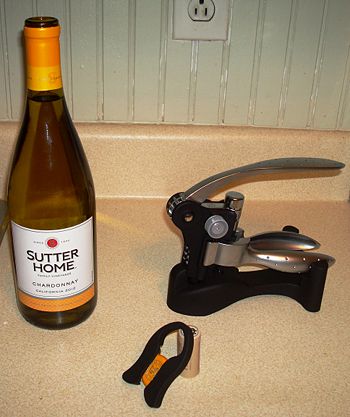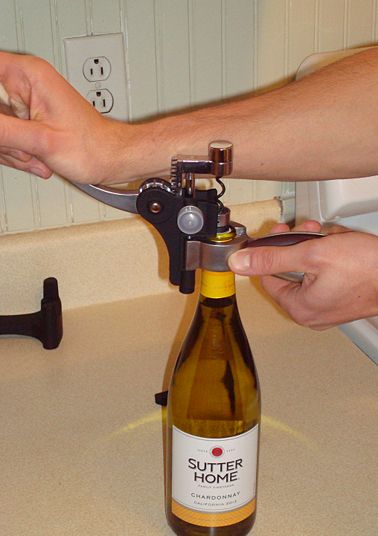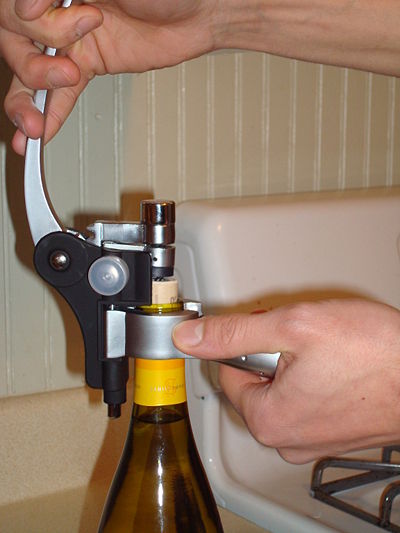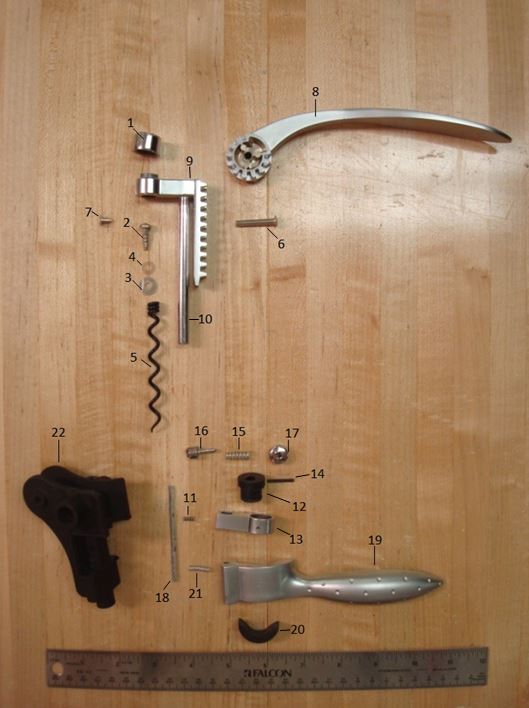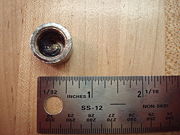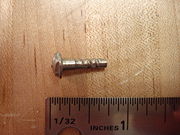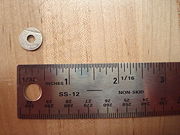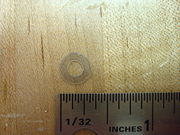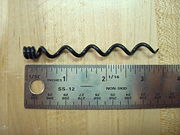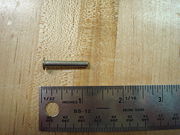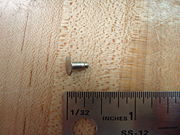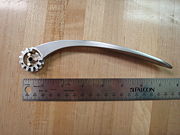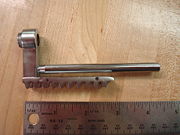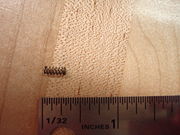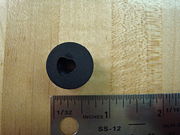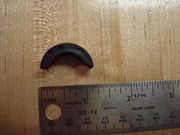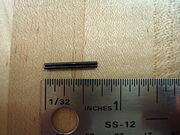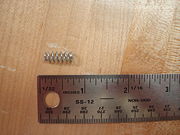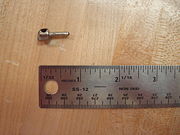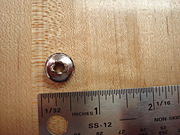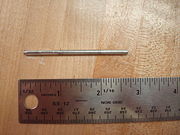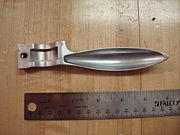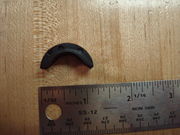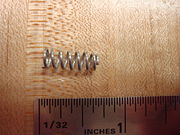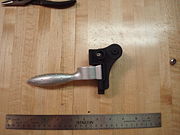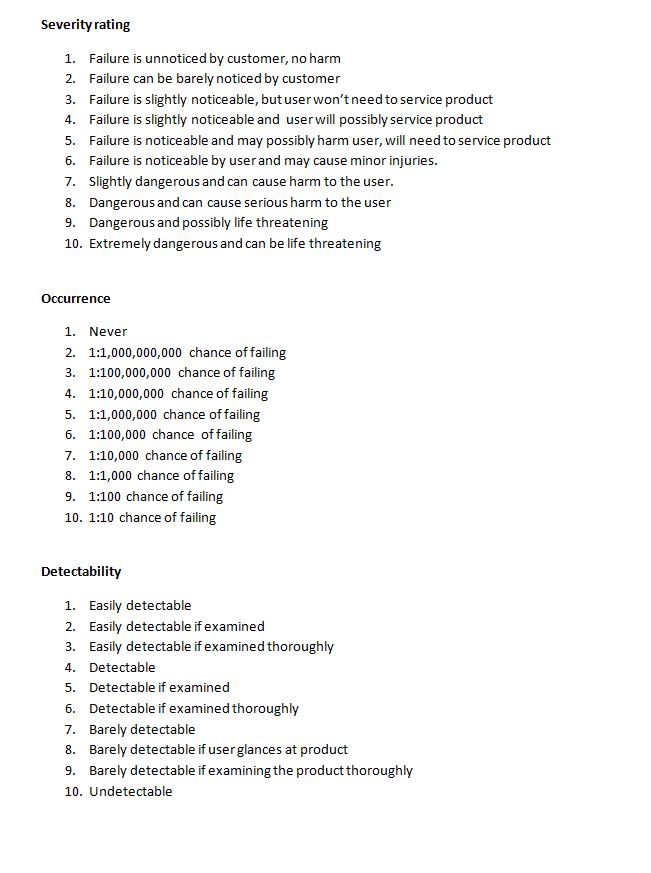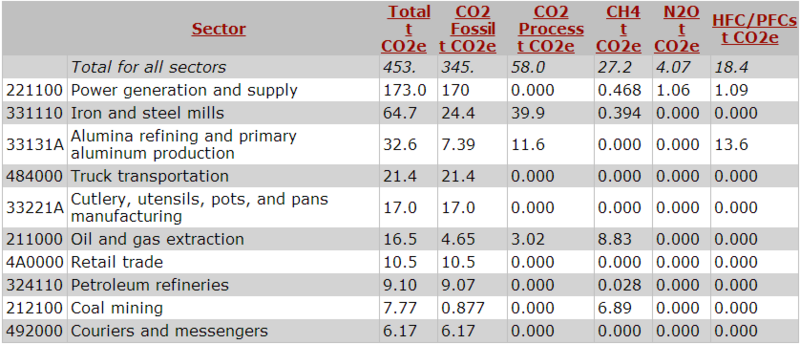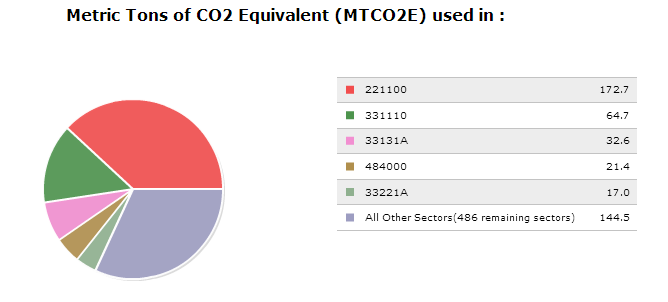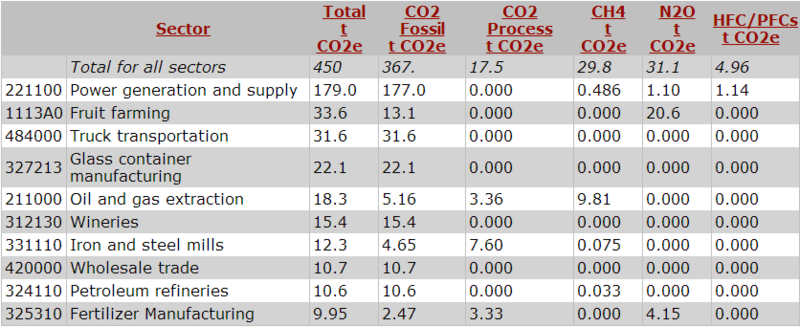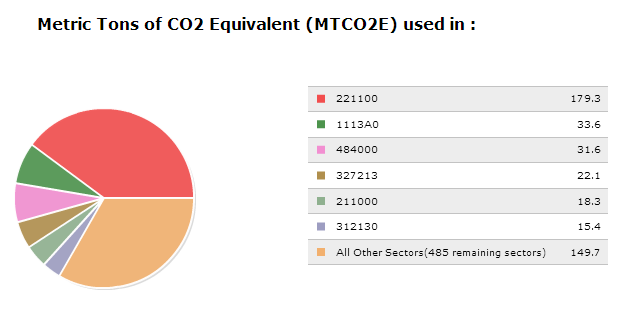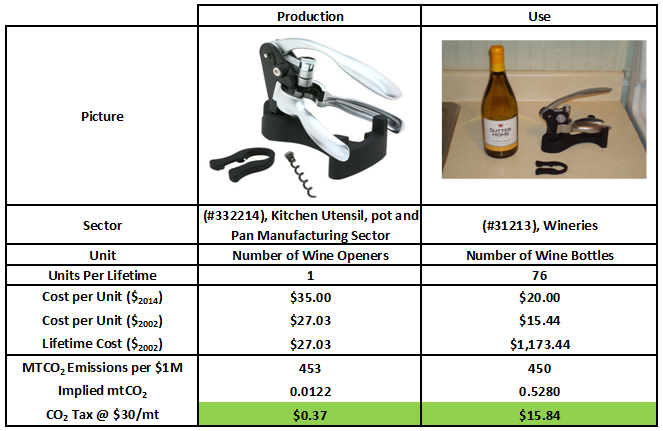Wine bottle opener
From DDL Wiki
Contents |
Executive Summary
The particular wine opener we chose to study is known as a lever corkscrew since it utilizes a lever arm to make opening a wine bottle easier for the user. While the average American household is guaranteed to have some kind of corkscrew opener handy, the opener we chose to study (made by MUI France) is geared towards wine connoisseurs and restaurants, who frequently have to open bottles of wine. As of 2/2/14 this product is available of Amazon for just $26.20 - http://www.amazon.com/Zinc-Alloy-Connoisseur-Corkscrew-Opener/dp/B0006ABVK2
When we dissected the product down to its individual elements, we found that it uses a simple gear to transform the rotation of the lever arm to vertical translation of the corkscrew. It was made up of a total of 29 individual components with the most complex piece being the plastic body at its center. The rest of the components are assembled around this body. The corkscrew or “worm” passes through a track to give it the rotational motion it needs to dig into the cork. The bigger components are made of steel or a zinc alloy to give the wine opener its shiny finish. Its appearance is one of its qualities that attracts a consumer to it, and is why we chose to buy it over some of the other products available in a similar price range. And yes, in order to study how the product is used and how it functions mechanically, we did open a few bottles of wine ourselves but please note that all the members of our team are of legal drinking age (>21 years old)
By dissecting and studying the product, we decided that the best way to improve the products manufacturability is by combining certain sub-assemblies in order to reduce part count. The product comes with an add on - a foil cutter - which we think could be combined with the gripper arms to make it easier for a user to cut the bottle’s wrapping. Some of the smaller components such as the springs and pins are all of different sizes, and we think their dimensions could be standardized to reduce costs. In order to reduce the overall weight of the product, we would recommend using a shiny plastic to manufacture the gripper arms and lever arm. This will keep the aesthetic appeal of the product intact and reduce the cost of production. Shipping and handling will also be a lot easier.
We think the gripper arms can be attached to the body of the opener by a snap-fit mechanism rather than be fastened in place with metal pins. This will make the product easier to assemble and easier to fix in case of breakage. When we performed Failure Modes and Effects Analysis (FMEA) we found that only 2 components had an RPN (Risk Priority Number) greater than 30. These were the gripper handles and the corkscrew worm. If the worm breaks or even bends slightly, it will make the bottle opening process a lot more difficult since the worm won’t descend into the cork properly which could cause the cork to crack.
It doesn’t take a wine connoisseur to know that you don’t want this happening, which is why we would recommend packaging the product with more than one spare corkscrew, to increase the life of one wine opener. Based on user reviews, the life cycle of this product is about 4 years. The main reason for this is the failure of a single component could lead to the consumer throwing away the entire product and buying a new one. However, the number of wine bottles opened during this period can be high, especially if the consumer is a restaurant, so the environmental impact of producing the wine opener is less than the environmental impact of producing wine and the glass bottles they are stored in. This is what we found when we performed a DFE analysis. To reduce environmental impact, we explore a few options in the DFE section.
Product Stakeholders
We identified the major stakeholders as consumers (individual connoisseurs and restaurants), retailers, manufacturers and distributors (transportation and shipping companies). Listed below are the stakeholders associated with a corkscrew wine opener and the product's aspects they need as well as the some additional aspects they want.
| Stakeholder Needs and Wants | |||
|---|---|---|---|
| Stakeholder | Needs | Wants | |
| Consumers |
|
| |
| Retailer |
|
| |
| Manufacturer |
|
| |
| Distributor |
|
| |
Consumers need a product that is easy to understand and use but they want something that is aesthetically pleasing and cheap to buy. Retailers also need an aesthetically pleasing product as they are easier to sell, and they need a product that has a high profit margin. They usually want a product with a high market demand to get customers to their doorstep (or website). Add-ons such as a foil cutter and a table mount make the product even more desirable. Manufacturers usually try to cut costs associated with production so their product needs to have a simple mechanism with few moving parts. Ideally they would want to make their product from low cost materials with a cost effective manufacturing process. Distributors are concerned with transportation and shipping so they need a durable product that won't get damaged in transit. They want the product to be as light as possible to reduce transportation costs.
Product Use Study
First the user cuts the foil with the foil cutter (provided). Second the user pushes the main handle down and then grabs the bottleneck with the two gripper handles. The bottle should be on a support during the whole process because the handles are not designed to support the bottle's weight. Third the user pulls the main handle up in order to make the screw penetrate the bottle cork. Fourth, the user pushes the main handle back down again in order to take the cork out of the bottle. Fifth, the user takes the corkscrew away from the bottle, presses the two gripper handles together and pulls the main handle up again in order to release the cork from the screw. Finally, the user is ready to enjoy the bottle he has just opened.
Mechanical Description
The main mechanical motion of the corkscrew is the translation-rotation of the screw (helicoidal motion). The translation motion comes from the rotation of the main handle. The link between those two components is a simple gear that transforms the rotation of the main handle into the vertical translation of the corkscrew sub assembly. In order to lead the vertical motion of the screw, a metal cylinder moves up and down into a vertical hole. The screw moves through a seal in which a helicoidal track has been designed to ensure the rotation of the screw. When the user pulls the lever arm down to remove the cork, the seal and seal holder move up with the cork (see picture above). This means that when the screw goes up it doesn't rotate. This translation without rotation is the motion that pull the cork out of the bottleneck. The seal holder is released when the pinion goes all the way down. It pushes the spring loaded clamps away, which allows the seal holder to move upwards. When the corkscrew moves down and applies a force on the cork, the cork does not fall into the bottle because of 1) the high air pressure inside the bottle 2) friction between the cork and the inside edge of the bottle neck and 3) the worm has a sharp edge that allows it to dig into the wooden cork rather than just push against it.
Assembly
Exploded View
Below is an exploded view of our wine bottle opener with labeled components
Bill of Materials
This is a table listing relevant component information
| Bill of Materials | |||||||
|---|---|---|---|---|---|---|---|
| Part Number | Name | Quantity | Weight (grams) | Function | Material | Manufacturing Process | Image |
| 1 | Bolt | 1 | 13 | Seals the corkscrew assembly from the top | Stainless steel | Machining | |
| 2 | Screw | 1 | 2 | Keeps the corkscrew from detaching. Washers are used as an offset | Steel | Cold Heading | |
| 3 | Screw | 1 | <1 | Prevents corkscrew going through part 9 | Steel | Drawn | |
| 4 | Washer | 1 | <1 | Adds friction | Plastic | Stamping | |
| 5 | Corkscrew | 1 | 6 | Screws into wine cork | Steel | Extrusion & High Temperature Forging | |
| 6 | Pin (Part 1) | 1 | 2 | Holds lever arm on body | Steel | Cold Heading | |
| 7 | Pin (Part 2) | 1 | <1 | Steel | Cold Heading | ||
| 8 | Lever Arm | 1 | 163 | Pushes corkscrew down into the wine bottle | Zinc Alloy | Casting | |
| 9 | Rack | 1 | 100 | Converts rotational motion to translational motion. 2 parts were welded together | Steel | Casting, Welding | |
| 10 | Pinion | 1 | n/a | Attached to Rack (Part 9) | Steel | Extrusion & Machining | |
| 11 | Small Spring | 1 | <1 | Provides compression forces agains the vertical cylinder | Steel | Extrusion & Cold Winding | |
| 12 | Plastic Seal | 1 | 3 | Acts as a rotating guide for the corkscrew | Plastic | Injection Molding | |
| 13 | Seal Holder | 1 | 18 | Attaches Part 10 to Part 12 | Aluminum | Casting & Machining | |
| 14 | Guiding Pin | 1 | <1 | Guides the corkscrew motions. Holds parts 12 and 13 together | Steel | Cut + High Temperature Folding | |
| 15 | Stiff Spring | 2 | <1 | Holds Part 16 in place | Steel | Extrusion & Cold Winding | |
| 16 | Spring Loaded Clamp | 2 | 2 | Used to prevent Part 13 from sliding vertically | Aluminum | Casting & Machining | |
| 17 | Cap | 2 | 4 | Attached Part 15 to the Body | Aluminum | Casting | |
| 18 | Pivot Rod | 2 | 4 | Holds Parts 15, 16, and 17 with each handle | Aluminum | Casting | |
| 19 | Handle | 2 | 105 | Holds the neck of the wine bottle | Zinc Alloy | Casting | |
| 20 | Handle Gripper | 2 | 3 | Provides friction for the bottle neck and prevents damage by cushioning it | Rubber | Injection Molding | |
| 21 | Handle Spring | 2 | <1 | Pushes handle into outwards position | Steel | Extrusion & Cold Winding | |
| 22 | Corkscrew Body | 1 | 42 | Holds the entire assembly together (Shown with handles) | Plastic | Injection molding | |
Summary
Our dissection showed us our wine bottle opener had 22 unique types of parts (29 components in total) weighing in at 586 grams. Our product is composed of steel, aluminum, zinc, plastic, and rubber. The body was made out of plastic. In combination with pivot rods and springs, the plastic body holds together the gripper handles, levers, and guide rack allowing the corkscrew to travel vertically. One thing we noticed about the product while dissecting it is that the pivot rods were plugged at the bottom of the plastic body. We drilled holes to reach these pivot rods which allowed us to separate the handles from the plastic body.
Failure Mode and Effects Analysis (FMEA)
Failure Mode and Effects Analysis (FMEA) in a design process is used to identify the potential failures that could occur with a product. It helps designers to know more precisely about the reliability of their product. They try to find out all the possible failures that a consumer may experience when using the product. They start by choosing an item and they identify any potential failure modes relating to the item. They also investigate the effects and the cause of failure. Finally they try to find solutions to this failure mode in the design control and by recommending actions. The failure mode is rated on three criteria: first on its severity, second on its occurrence and third on its detectability. In order to judge that, they use the following rating tables:
Then they obtain a Risk Priority Number (RPN) by multiplying the 3 numbers they just used to judge the failure mode. The higher the RPN is, the worse it is for the product. Some design modifications should be made when the RPN reaches some high value like for example 100. Here is the FMEA table that we filled for the product the dissected.
Table
| FMEA - Wine Bottle Opener | |||||||||
|---|---|---|---|---|---|---|---|---|---|
| Items and Function | Failure Mode | Effects of Failure | Severity | Causes of Failure | Probability of Occurrence | Design Control | Detectability | RPN | Recommended Actions |
| Handles - hold and squeeze the bottle | become loose | drop the bottle | 9 | drop the item, shipping damages, rubber is defective | 3 | Test the pins (fatigue) and test the rubber | 3 | 81 | make sure the rubber are well stuck in the handles |
| squeeze too hard | break the bottle | 7 | super strong user/defective rubber | 1 | testing resistance of a bottle and rubber | 3 | 21 | Write something in the manual about the strength that should be used | |
| lever arm pin - attaches the arm to the body | got broken or bent | lever arm gets detached from the body -> drop the bottle or self injury | 7 | too much force/torque applied, pin is not strong enough | 3 | test the pin | 1 | 21 | improve geometry (larger cross section) or better material selection |
| cork and screw - close the bottle | lever arm rotation stopped before the end | screw not deep enough into the cork -> cork may break | 4 | inappropriate use of the item | 3 | none | 2 | 24 | set a "stop click" which prevents to rotate backwards before a certain angle / write something in the manual |
| body - holds every component together | to broken or bent | item falls apart -> not usable anymore | 5 | drop the item, shipping damages | 3 | none | 2 | 30 | thicker sections / material selection |
| corkscrew - gets the cork out of the bottle | got broken | unusable | 5 | stuck in cork / drop the item / use the item at very low temperature | 2 | testing resistance of the corkscrew | 3 | 30 | include second corkscrew, make it easy to change the component, change material |
| got bet | doesn't run through the track anymore | 5 | hit the device during usage, try to get the cork out applying torque | 5 | 3 | 75 | |||
Conclusion of the FMEA analysis
For our product we only have 2 RPN that are close to 100. The 2 concerned items are the handles and the corkscrew itself. Therefore and in order to minimize any potential failure mode, we should probably work on those 2 items. For the handles, we could probably improve the way the rubber (that are going to be in contact with the bottleneck) are attached to the handles and make sure they have no way of getting detached from the handles. For the corkscrew, we could probably improve the interchangeability of this item and add 2 or 3 of them in order to change them. On top of that, we could precise in the user manual that the product shouldn't be used if the corkscrew is bent or broken.
Design for Environment (DFE)
Overview
We completed a life-cycle assessment of our wine bottle opener to determine its impact on the environment. Using a greenhouse gas (GHG) model found on www.eiolca.net, we were able to determine GHG emissions from the production and use of our product. We chose sectors used in the US 2002 Purchaser Price Model set at $1 million of economic activities because we did our monetary evaluations from the consumer's perspective. For our EIO-LCA analysis, we disregard the end-life of our product so we can have a narrow scope in our evaluations.
Production
The wine bottle opener can be considered under the Kitchen Utensil, Pot, and Pan Manufacturing sector (#332214). We have high confidence that our product is well represented by this sector because it is comprised of mostly metal parts. Despite pots and pans having higher metal content, the GHG emissions would reflect similarly to the wine bottle opener.
We see that the largest contributor to GHG emissions (#221100) in this sector is Power Generation and Supply at 38.1% of overall emissions with Iron and Steel Mills (#331110) at 14.3% as seen in the graph below.
Use
The only consumable for our products lifetime would be wine. The "Wineries" Sector (#31213) embodies the production and distribution of wine, taking into consideration fruit farming, glass bottle making, transportation, etc. Wine comprises all of this sector so we have high confidence that the GHG emissions data will be a good representation for our product application.
Similar to production, the Power Generation and Supply (#221100) sector is the biggest contributor to GHG Emissions for wine production. The next 20% of GHG emissions come from a combination of the Fruit Farming (#1113A0), Truck Transportation (#484000), and Glass Container Manufacturing (#327213) Sectors.
Lifetime Emission Evaluation
Assumptions:
- Average lifetime of 4 years comes from customer reviews on Amazon.com
- $20 per bottle. Considering all types of alcoholic drinks wineries produce such as champagne (which this product can be used to open a bottle of!)
- Bottles of wine consumed calculated by taking the average consumption per capita (www.wineinstitute.org) x 2 wine connoisseurs per household x 4 years.
- One wine opener per household
We see that the production of our product does not have a significant impact in terms of Lifetime Emissions relative to wine consumption. Since the amount of wine consumed over 4 years is so high, it makes sense that a 30 carbon dioxide tax would have an impact on consumers when they purchase their wine. But that tax would only increase our product's price by $0.37.
(Picture source: http://ecx.images-amazon.com/images/I/41A26YXF8JL.jpg)
Design for Environment Guidelines
| Design for Environment Guidelines | |||
|---|---|---|---|
| DFE Guideline | Aspects of Competitors/Ideas for Improvement | ||
| New Concept Development |
| ||
| Selecting Low Impact Materials |
| ||
| Reducing Material Amount |
| ||
| Eco-Manufacturing |
| ||
| Optimize Distribution |
| ||
| Reduce Use-Phase Impact |
| ||
| Maximize the "First Life" |
| ||
| End of life |
| ||
Summary
From our EIO-LCA analysis, most of our GHG emissions come from providing power and electricity for product and wine manufacturing. By designing for quick assembly and easy assembly, we can reduce our power usage and impact on our environment. When it comes to our lifetime emissions, high wine consumption forces us to think more about wine manufacturing instead of our product. By going over some design for environment guidelines, we can replace certain materials that are considered staples of the wine industry: glass bottles and corks. The caveat in our design is we can change materials in our product and in wine production but we would be sacrificing the prominence inherent in the wine industry.
DFMA
Our product is a fairly small device that is extremely complex and unique. Therefore, we found that most of the parts were essential and we did not see very many places for improvement. However, there are a few key improvement opportunities that we noticed. First off, we would standardize the pin and spring sizes used throughout the device, as they were similar. Also, we would remove the springs from the handle connections. These springs seem to serve little purpose and make the assembly process more challenging. We would also hollow out parts of the metal pieces throughout the product. They are all large and bulky, but experience very little stress during use. Finally, we thought it could be useful to attach a foil cutter into the handles. Then, when the device is mounted onto a bottle, a simple twist would cut the bottle's foil. This eliminates the need for manufacturing an entirely separate foil cutter, as is included with our product.
Design for Manufacturing Guidelines
| Design for Manufacturing Guidelines | |||
|---|---|---|---|
| DFM Guideline | Ideas for Improvement | ||
| Minimize Part Count |
| ||
| Commonize Product Line |
| ||
| Standardize Design Features |
| ||
| Keep Design Simple |
| ||
| Multifunctional Parts |
| ||
| Ease of Fabrication |
| ||
| Minimize Secondary and Finishing Operations |
| ||
| Other |
| ||
Design for Assembly Guidelines
| Design for Assembly Guidelines | |||
|---|---|---|---|
| DFA Guideline | Ideas for Improvement | ||
| Minimize Part Count |
| ||
| Minimize Assembly Surfaces |
| ||
| Use Subassemblies |
| ||
| Mistake-Proof |
| ||
| Minimize Fasteners |
| ||
| Minimize Handling |
| ||
| Maximize Assembly Compliance |
| ||
Team
DFMA lead : Ross Farquharson
FMEA lead : César Daguet
DFE lead: Alex Clement
Stakeholders lead : Gautam Poddar
Use Study lead : Claude Muller
References
Books
Dieter, George E., and Linda C. Schmidt. Engineering Design. 4th Edition. New York, NY: McGraw-Hill, 2009. 662-667.
Images
Scan from Dieter, George E., and Linda C. Schmidt. Engineering Design. 4th Edition. New York, NY: McGraw-Hill, 2009. 663-664.
Websites
http://en.wikipedia.org/wiki/Failure_mode_and_effects_analysis
http://ecx.images-amazon.com/images/I/41A26YXF8JL.jpg
http://data.bls.gov/cgi-bin/cpicalc.pl
http://www.wineinstitute.org/files/World_Per_Capita_Consumption_by_Country_2011.pdf
http://www.amazon.com/Zinc-Alloy-Connoisseur-Corkscrew-Opener/dp/B0006ABVK2
